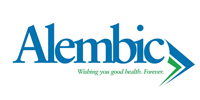USED FOR:
Bacterial infections
Allergic disorders
COMPOSITION:
Gentamicin (0.3%)
Dexamethasone (0.1%)
Therapeutic Uses:
ophthal otologicals
hormones

No interaction found

WEIGH RISKS VS BENEFITS
Gentamide DM 0.3%/1% Eye Drop is unsafe to use during pregnancy.There is positive evidence of human fetal risk, but the benefits from use in pregnant women may be acceptable despite the risk, for example in life-threatening situations. Please consult your doctor.

Gentamide DM 0.3%/1% Eye Drop is probably safe to use during lactation. Limited human data suggests that the drug does not represent a significant risk to the baby.

Gentamide DM 0.3%/1% Eye Drop may cause side effects which could affect your ability to drive.

Gentamide DM 0.3%/1% Eye Drop is probably safe to use in patients with kidney disease. Limited data available suggests that dose adjustment of Gentamide DM 0.3%/1% Eye Drop may not be needed in these patients. Please consult your doctor.Regular monitoring of kidney function tests and other blood tests is advisable while you are taking Gentamide DM 0.3%/1% Eye Drop.

CAUTION
Gentamide DM 0.3%/1% Eye Drop should be used with caution in patients with liver disease. Dose adjustment of Gentamide DM 0.3%/1% Eye Drop may be needed. Please consult your doctor.
Uses of Gentamicin
Gentamicin is used in the treatment of bacterial infections.
How to use Gentamicin
This medicine is for external use only.Take it in the dose and duration as advised by your doctor. Check the label for directions before use. Hold the dropper close to the eye/ear without touching it. Gently squeeze the dropper and place the medicine inside the lower eyelid or ear. Wipe off extra liquid.
How Gentamide DM 0.3%/1% Eye Drop works
Gentamicin is an antibiotic. It kills bacteria by inhibiting synthesis of essential proteins, required by bacteria to carry out vital functions.
Common Nausea, Vomiting, Skin rash, Diarrhoea, Hearing loss, Balance disorder (loss of balance).
Expert advice for Gentamicin
It is given as a drip (intravenous infusion), as an injection directly into a vein or into a muscle; or as an ear or eye drops. Do not drive immediately after using gentamicin eyedrops because gentamicin in the eye may cause temporary blurring of vision. Gentamicin should be used with caution in premature babies because of their kidney immaturity, and in elderly people. Gentamicin may cause damage to the kidneys and/or nerves. Consult your doctor for monitoring Kidney function and drug levels in the blood during treatment. Consult your doctor, if you experience hearing loss, dizziness, numbness, skin tingling, muscle twitching, or seizures which may be signs of nerve damage. Do not start or continue the gentamicin and consult your doctor:
If you have inflammation of the middle ear (otitis media), kidney or liver problem, open wound or damaged skin.
If you are pregnant or planning to become pregnant or breastfeeding.
If you experience itching, skin rashes, swelling of face, lips, throat or difficulty in breathing.
Q. Is Gentamicin a macrolide, steroid or a sulfa drug?
Gentamicin does not contain sulfa and is not a macrolide, or steroidal drug. It is a broad spectrum aminoglycoside
Q. Is Gentamicin nephrotoxic?
Yes, Gentamicin is a nephrotoxic drug. Please consult your doctor before taking the drug
Q. Is Gentamicin safe for babies?
Gentamicin is safe for babies if used at prescribed doses for the prescribed duration as advised by your doctor
Q. Does Gentamicin cause hearing loss or burn?
Yes Gentamicin can cause hearing loss if used inappropriately. It can cause burning of eyes
Q. Is Gentamicin used for pink eye?
Yes, Gentamicin is used in the treatment of pink eye (conjunctivitis). Please consult your doctor before use
Q. Does Gentamicin dialyze out?
Yes, Gentamicin is a dialyzable drug
Q. What organisms does Gentamicin cover?
Gentamicin is mainly effective against pseudomonas, escherichia, enterobacter, klebsiella, staphylococcus, salmonella, serratia, and shigella species but rarely effective against streptococci and methicillin-resistant Staphylococcus aureus (mrsa)
Q. Does it cover anaerobes?
It does not act against anaerobes.
Uses of Dexamethasone
Dexamethasone is used in the treatment of allergic disorders, severe allergic reaction, asthma, cancer, rheumatic disorder, skin disorders, eye disorders and nephrotic syndrome.
How to use Dexamethasone
This medicine is for external use only.Take it in the dose and duration as advised by your doctor. Check the label for directions before use. Hold the dropper close to the eye/ear without touching it. Gently squeeze the dropper and place the medicine inside the lower eyelid or ear. Wipe off extra liquid.
How Gentamide DM 0.3%/1% Eye Drop works
Dexamethasone belongs to a group of medicines called corticosteroids. It prevents late phase allergic reactions by preventing release of chemicals responsible for allergy..
Common Electrolyte imbalance, Redistribution/accumulation of body fat, Bone degradation, Increased risk of infection, Muscle disorders, Increased blood pressure, Altered bone growth, Skin scar, Behavioural changes, Increased glucose level in blood, Cataract.
Expert advice for Dexamethasone
It is a steroid medicine which works well for many different conditions, including serious illnesses. Take regularly to gain maximum benefit. Do not discontinue unless advised by your doctor. You may need to decrease the dose gradually. You may get side effects such as mood changes or stomach problems. Notify your doctor if you get them. Some side effects may occur after weeks or months. These include weakness of arms and legs, or developing a rounder face. Your risk of getting an infection may become higher. Tell your doctor immediately if you have a fever, flu-like symptoms, cough, painful urination, or a wound that does not heal.


 Gentamide DM 0.3%/1% Eye Drop
Gentamide DM 0.3%/1% Eye Drop  Bookmark
Bookmark





















